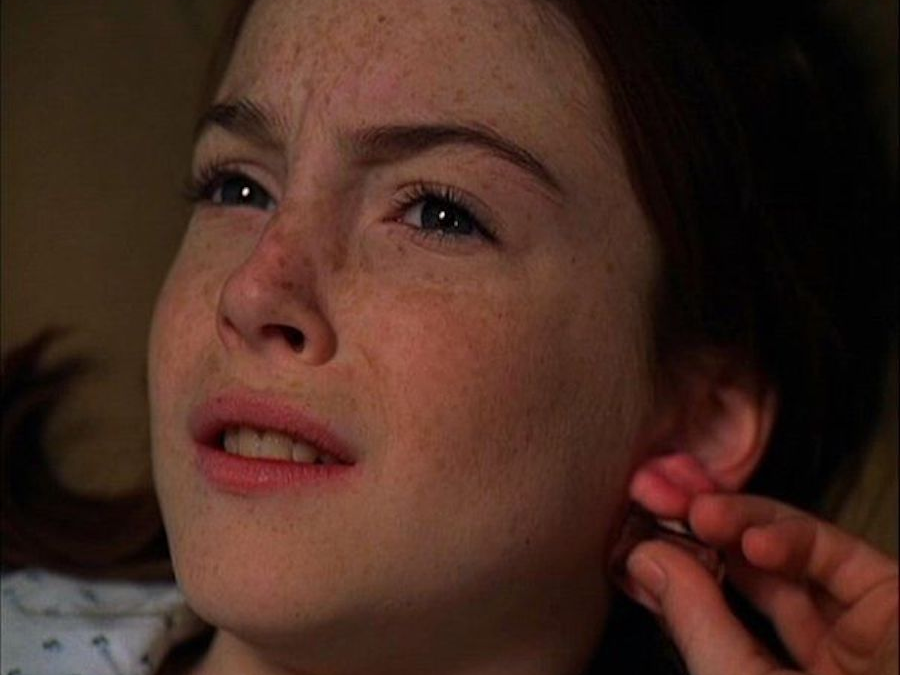- A Facebook post showing a man with the center of his ears cut out went viral. It’s called conch removal.
- The procedure comes with risks, including infection and hearing problems.
- This type of surgery can also be difficult to reverse as it requires two expensive surgeries, according to Paul Stanislaw, a reconstructive plastic surgeon.
- Visit INSIDER’s homepage for more.
Ear gauging, or stretching the ear lobe with jewelry, has been popular for years, but a new kind of dangerous ear modification is now being debated after a Facebook post showing a man with the center of his ears cut out went viral.
The modification is known as a “conch removal” and involves removing the inner cartilage of the outer ear. This leaves a big enough hole to see through the entire ear.
After the owner of a Swedish body piercing and modification shop posted the image of the conch removal to Facebook, it garnered over 39,000 comments and 17,000 shares.
“Fresh #conchremoval on @charlesvbentley who traveled around the world from Australia to have this procedure performed by me at @calmbodymodification,” the post read. The post also suggested that the procedure can help people hear better from behind.
"For real, as a deaf person, can I just say f--- you?," one person wrote. "As an audiologist this is really making my eyes bleed," another wrote.
According to Paul Stanislaw, a board-certified plastic surgeon who focuses on facial reconstructive procedures, there is no proof that this type of surgery can make a person's behind-the-ear hearing better. "Ears were designed to hear better [from the] front and locate things and disrupt hearing in front of you."
Conch removal is also dangerous.
In the United States, only trained doctors with the appropriate medical licenses are allowed to perform surgeries, according to federal law. Surgery is defined as any procedures that involve removing skin or cartilage from the body, which means conch removal is illegal in the US for anyone without a license. In certain other countries (including Sweden), this isn't the case.
Conch removal can lead to infection and permanent tissue damage
Dr. Stanislaw's biggest concern with conch removal is the risk for infection. "If bacteria gets in the cartilage, it's tough to treat that infection and [you] could be hospitalized and [have to] go on antibiotics. Infection would also scar up and ruin the rest of the cartilage," Stanislaw told INSIDER. An infection can occur if the conch removal isn't done under sterile conditions or the wound isn't properly cared for following the removal.
If the ear becomes infected, the delicate ear tissue will first become red and swollen, and then scar over and cause the ear to have a shriveled appearance, according to Stanislaw. Once the cartilage is shrunken, there is no way to re-inflate it.
This type of infection is less common with ear gauge modifications, since they target the soft ear lobe tissue rather than cartilage.
Another potential complication is excess water in the ears, since ear cartilage is designed to prevent water from entering the ear canals during swimming or showering.
Ear conch removal can be reversed with surgery, but it comes at a high cost
Stanislaw has never encountered someone with a removed conch because US law makes it so difficult to find places that will perform the procedure. But he's reversed a number of ear gauge modifications, and based on those, believes an ear conch surgery reversal would be time-consuming and expensive.
Conch removal reversal would involve two separate procedures, according to Stanislaw. The first would involve sewing the remaining part of the ear against the bone behind the ear called the mastoid area. This would allow for more blood to flow to the ear and help a skin graft to grow. Then, for the second part of the procedure, Stanislaw would release the ear from its sewn up position and use the skin graft to replace the spot where the conch was formerly located.
Ear gauge reversal surgery is around $500 per ear, and Stanislaw estimates the cost would be even more for conch removal reversal since it's so complex.
When people get ear modifications reversed, it's usually out of need, not want. "I've repaired ear gauges on people and they're crying not out of pain but because it's like I'm taking away a part of their identity. It is very upsetting for people," Stanislaw said.
He said some of his patients opt to repair their ears after they've had trouble job-hunting; many employers won't accept them due to their body modifications.
"Our society is more progressive, but people still discriminate," Stanislaw said.
- Read more:
- 4 people who went under the knife told us why they did it, and their stories explain why the average age for cosmetic surgery keeps getting younger
- Photos show the astonishing reality of what breast implants look like after they've been removed from the body
- A woman who had $30,000 worth of surgery to look like Meghan Markle says it's helped her self-esteem

